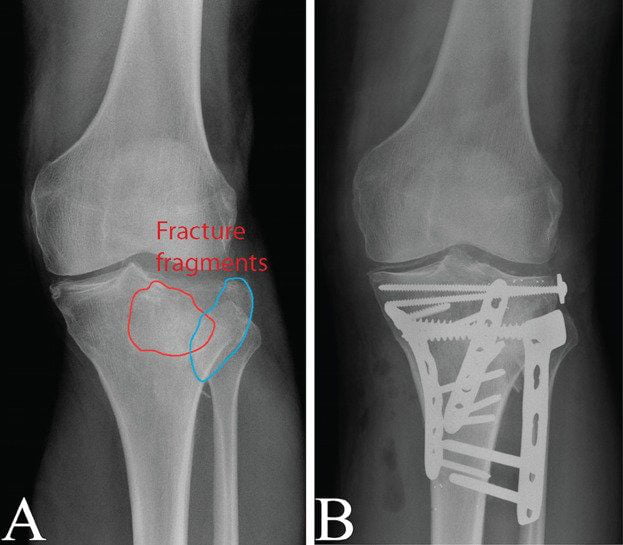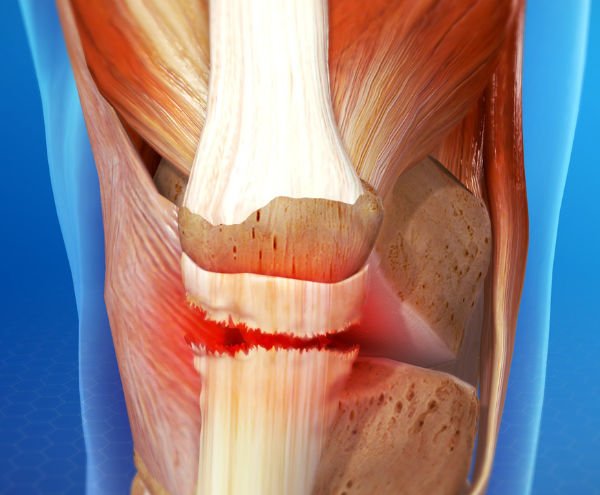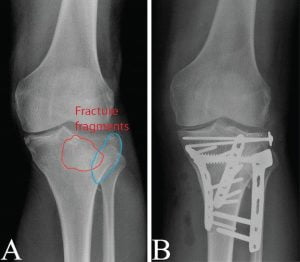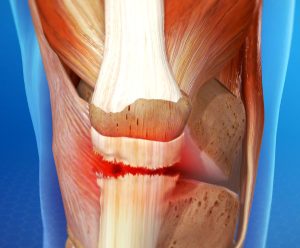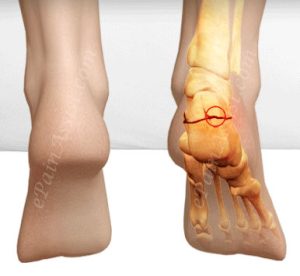Table of Content:
FAQs for Tibial Plateau Fractures
Injury Background
Physical Therapy and Recovery
Stage I Physical Therapy
Stage II Physical Therapy with Video
Stage III Physical Therapy with Video
Patient Case in Video
Exercise Description
Full 12 Week Home PT Rehab Program
FAQs for Tibial Plateau Fracture Recovery:
Can you walk on a fractured tibial plateau?
Yes you may be able to walk with a tibial plateau fracture, but it is not recommended. The size of the tibial plateau fracture can be hairline or it can be complicated with at multiple broken pieces of bone which have shifted. The worse the fracture the more pain you will have and less weight you can put on the leg. A hairline tibial plateau fracture will heal even if you put weight on it but a displaced (where the broken bone has moved) tibial plateau fracture will need surgery and rest to heal properly.
How serious is a tibial plateau fracture?
The tibial plateau fracture could be a mild hair line fracture which is not serious or it can be severe and serious where you need pins and plates to put it back into place. It will depend on the trauma involved and how badly you broke it.
How long does it take for a tibial plateau fracture to heal without surgery?
6-12 weeks with rest if the tibial plateau bone didn’t shift after the break or if the fracture is just a hair line fracture. If the fractured bones shifted after the break and surgery was required to put the bones together with pins and plates, then it can take up to 6 months to walk normal and 12 months to return to playing sports like before the injury.
Is surgery required for a tibial plateau fracture?
Yes, surgery is required for a tibial plateau fracture if the bones shifted and needs to be put back in place with pins and plates so the knee can heal correctly. If bones didn’t shift then no surgery is needed, just rest and limited walking.
Can I bend my knee after tibial plateau fracture?
Yes, bending the knee can start immediately after tibial plateau fracture if you did not have surgery. If you had surgery then you can start bending the knee to 90 degrees 1 week after surgery. Once the incision is fully healed (10-14 days) you can go past 90 degrees of knee bend.
How do I strengthen my knee after tibial plateau fracture?
For the first 6 weeks you will do all exercises in non-weight bearing (no weight on your leg). You can do this by doing exercises like straight leg raises on you back and quadriceps activation in sitting or laying down. After 6 weeks, you can start doing partial squats and walking training exercises.
How long after a tibial plateau fracture can you walk?
If you had surgery for your tibial plateau fracture, you can put a little bit of weight on the leg after 6 weeks with the goal of walking normally by the 10th week. If you did not have surgery for your tibial plateau fracture, you can start walking safely with a knee brace in 4-6 weeks.
COMPLETE 12 WEEK PHYSICAL THERAPY REHAB PROGRAM WITH PT EXERCISE AND STRETCHING VIDEOS.
RECOVERY CASE STUDY:
Injury Background:
Tibial Plateau fractures are some of the worst knee injuries we see in physical therapy. In a tibial plateau fracture the bottom half of the knee joint (tibia) breaks/shatters due to blunt force trauma common in high speed falls (skiing/snowboarding) and car accidents.
The surgeon has to put the bottom-half of the knee back together using pins and plates. The pins and plates hold the broken knee bones in place while the knees heals. It usually takes 6-12 weeks for the bones to heal and for the structure of the knee to be stable enough to start putting weight through the leg.
Physical Therapy and Recovery:
Recovery is long and painful for tibial plateau fractures that required surgery. It usually takes up to a year for a patient to return to their prior level of movement. With that said, at Motion Physical Therapy we have had athletes return to their sport and normal everyday people return to squatting, lunging , and climbing ladders with no complications after a successful rehab.
Stage I Physical Therapy:
The first stage of physical therapy for tibial plateau fracture is spent doing exercises in sitting or laying down positions to limit load on the healing knee joint.
- Patient perform a lot of isometric (no joint movement, just muscle contraction) exercises during this time
- The physical therapist also spends a lot of time ranging the knee to make sure it bends and straightens appropriately for the stage of healing. Typically we like to gain 10 degrees of knee bend each week until full range of motion is achieved.
- The knee straightening should be easy at this point because most patients are locked out in full knee extension knee brace for the first 6 weeks. So when they come out of it, their knee won’t bend much but it straightens out just fine.
At the end of the first stage, as physical therapists, we want to see good knee range of motion and good muscle activation. The patient should also be able to lift their leg up off the bed with the knee straight and no difficulty. This stage usually lasts 3 months. This stage also lasts until the surgeon gives the green light to start putting weight through the leg.
Stage II Physical Therapy:
The second stage of physical therapy for tibial plateau fracture is focused on tolerating weight bearing through the leg, getting the muscles to do their job in stabilizing the kne , balance training and learning how to walk normal again.
- Patients usually start riding the bike for range of motion, strength and endurance.
- We do a lot of double leg balance exercises and progress to single leg balance once appropriate
- We start weight bearing exercises like heel/toe raises, marching, mini squats
- We work on walking by practicing landing on the heel and pushing off on the toes
At the end of the second stage the patient should be able to get up from low chairs and walk around in their neighborhood with only a small limp. This stage usually lasts a few months.
Stage III Physical Therapy:
The third stage of physical therapy for tibial plateau fracture is focused on strength, endurance and functional movements. We also want to clean up any range of motion, flexibility and mobility issues that might be lingering.
- We start squatting and lunge training
- We start using agility ladders, bosu balls and unsteady surfaces to work on balance, control and awareness
- Jogging and cutting training start to happen at this stage for our athletes, slow speed to being with and then faster as they progress
- We use jump ropes, TM and ellipitcal to work on patient cardio
- We will also work on jumping and landing in physical therapy for our jumping athletes
This stage can last anywhere from month 6-12 months. The goal is the get the patient as close to 100% as possible before they are discharged from physical therapy. If we cannot get them to 100% then our goal is to make sure the patient is aware of what they need to do on their own to get close to 100%.
Patient Case in Videos:
The patient was injured when a speeding car hit him on his left side causing a tibial plateau fracture. He had to wait 2 months for the surgery. The wait led to a lot of muscle loss and delayed his progress when he first started at Motion Physical Therapy.
We have spent 6 months pushing his knee range of motion and it is finally getting close to matching his other knee. The surgeon cleared him to start putting some weight on the leg at the 10-week mark after surgery because the x-rays showed good alignment in the healed bone. We have been slowly pushing his weight bearing over the past 3 months. He can now walk short distances without needing a cane or crutch.
His hamstring and quad muscles are still weak, but now that he can do standing exercises he should progress quickly.
He is currently in the early third stage of tibial plateau fracture recovery.
These cases are complex with a lot of highs and lows for the patient and the physical therapist. At Motion Physical Therapy we are more than happy to take on these cases. Feel free to reach out to us if you have any questions regarding physical therapy for these complex injuries.
Exercises:
- Bridge walk outs – Great exercise for the gluteals and hamstrings. You can see how he struggles to maintain the bridge all the way through the walkout
- TRX Squats – Leaning back on the TRX straps helps him limit the stress on his knees. This allows him to use his gluteals more. Best cue to him was to reach back with his butt like he’s going to sit in the chair.
- Wall Marching – Great way to load the injured leg. His cues are to push the wall back and to drive with the wall back with his legs. Great way to activate the quadriceps and gluteals.
12 WEEK COMPLETE PHYSICAL THERAPY PROGRAM AT HOME:
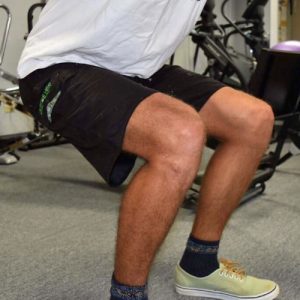
Looking to rehab your Tibial Plateau Fracture injury on your own? You’re in luck, we offer a step-by-step exercise progression program with exercise videos to help you recover fully without the need for formal physio/physical therapy.
For our complete Physical Therapy Treatment program at home check out our HOME PHYSICAL THERAPY REHAB PROGRAM FOR TIBIAL PLATEAU FRACTURE.
It is a 12 week program to guide you through every exercise, stretch and milestone on your recovery from this injury.
It was developed by our expert PTs, who treat these types of injuries daily in our clinics.
The program is broken down into weekly video modules that show and explain what exercises and stretches to do for that week. The videos go over proper technique, form and what to look out for with that exercise.
This program is meant for those who do not have access to a licensed physical therapist and wish to get the best outcome for their injury.
To purchase the complete home physical therapy rehab program for tibial plateau fractures please CLICK HERE for Tibial Plateau Rehab Program.
